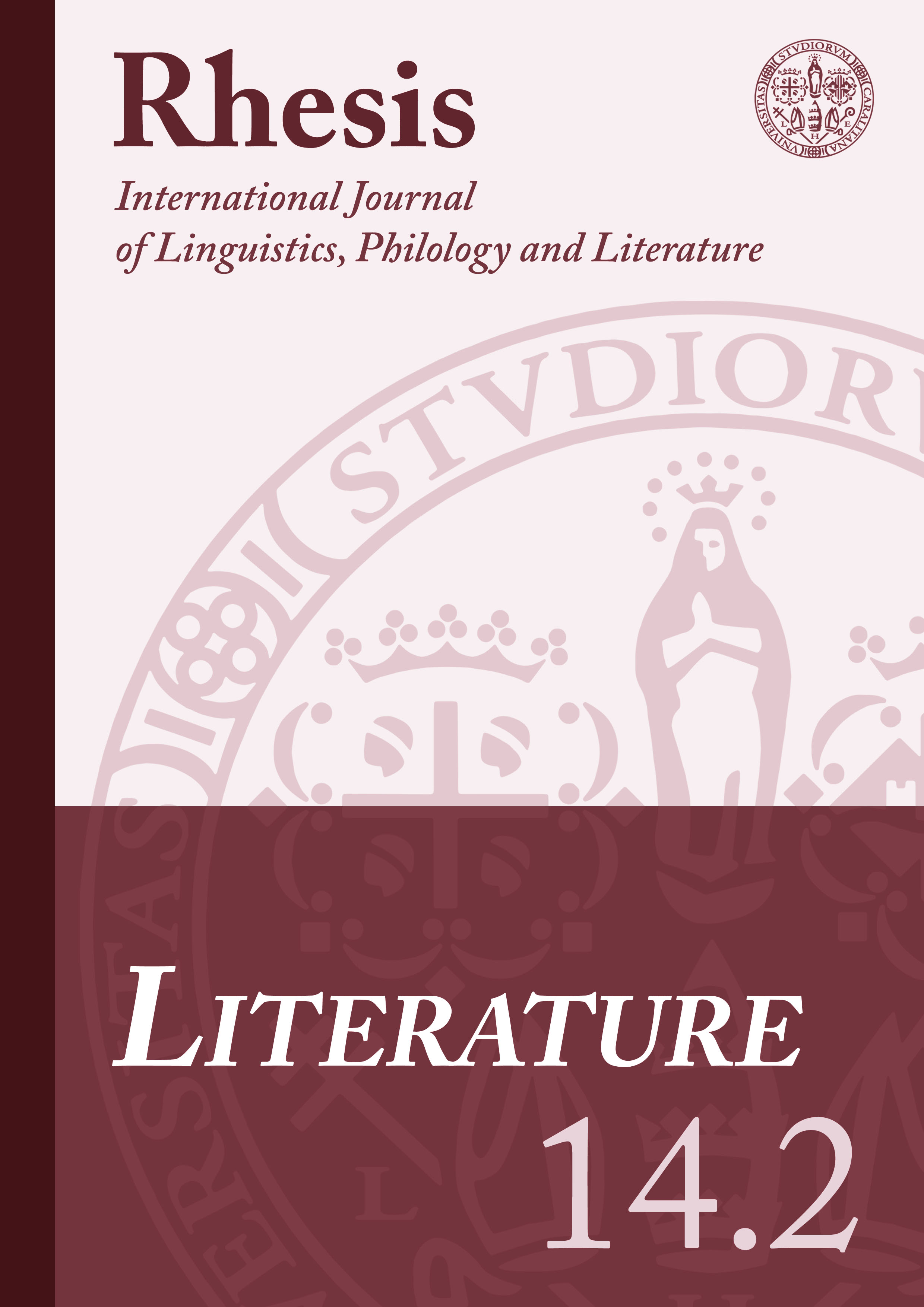Transumano e antispecista? Umani, non umani ed ecologia culturale nell'utopia transumanista
Abstract
Con un ricco corpus di immagini che hanno influenzato le culture di tutto il mondo, l’idea dell’ibridazione uomo/animale non è certamente senza precedenti. In tempi molto più recenti, lo specismo e le implicazioni teoriche del trans- e postumanesimo hanno attinto alla ricca fonte tematica che ha dato vita a generi come il fantastico e la fantascienza, per creare nuovi modelli di interazione tra animali umani e non-umani, al fine di mettere in crisi, ancora una volta, l’opposizine tra natura e cultura. Attraverso l’analisi di Motherlines di Suzy McKee Charnas e della trilogia di MaddAddam di Margaret Atwood, questo saggio intende discutere le ipotesi di antispecismo nei modelli letterari del transumanesimo che poggiano sull’ibridazione uomo/animale in un contesto post-apocalittico, concentrandosi in particolare sul mai superato antropocentrismo che resiste persino all’interno di una prospettiva eco-culturale. Nella stessa prospettiva, osserveremo le modalità di interazione tra animali umani e non-umani secondo quello che i transumanisti definiscono ‘uplifting’ (Dvorsky, 2008) ed evidenzieremo i modi in cui l’ibridazione uomo/animale può dare vita a nuove narrazioni utopiche per la sopravvivenza e la rinascita delle società al collasso, per giungere infine a una riflessione sullo spazio che l’antispecismo potrebbe non trovare in questo nuovo mondo interspecie e transumanista.
Downloads
Riferimenti bibliografici
Atwood, Margaret (2009), The Year of the Flood, New York, Anchor Books.
Atwood, Margaret (2011), In other worlds: SF and the human imagination, London, Virago.
Atwood, Margaret (2013), MaddAddam, New York, Anchor Books.
Bostrom, Nick (2003), ‘Transhumanist Values’, in Adams, Frederick (ed.), Ethical Issues for the 21st Century, Philosophical Documentation Center Press, 3-14,
Bulgakov, Michail (2011), Cuore di cane, in Id., Cuore di cane e Uova fatali, Milano, Feltrinelli.
Caronia, Antonio (2020), Dal cyborg al postumano. Biopolitica del corpo artificiale, Milano, Meltemi.
Charnas, Suzy McKee (1995), Holdfast Chronicles. Walk to the End of the World and Motherlines, London, The Women’s Press.
Cavalcanti, Ildney (2003), ‘The Writing of Utopia and the Feminist Critical Dystopia: Suzy McKee Charnas’s Holdfast Series’, in Baccolini, Raffaella; Moylan, Tom (eds.), Dark Horizons. Science Fiction and the Dystopian Imagination, New York, Routledge, 47-68.
Crutzen, Paul J.; Stoermer, Eugene F. (2000), ‘The ‘Anthropocene’’, IGBP Global Change Newsletter 41, 17-18.
Descola, Philippe (2014), Oltre natura e cultura, Firenze, SEID Editori.
Dvorsky, George (2008), ‘All Together Now: Developmental and ethical considerations for biologically uplifting nonhuman animals’, Journal of Evolution and Technology 18 (2), 129-142,
Federici, Eleonora (2015), Quando la fantascienza è donna. Dalle utopia femminili del secolo XIX all’età contemporanea, Roma, Carocci.
Ferrando, Francesca (2016), ‘The Party of the Anthropocene. Post-humanism, Enviromentalism, and the Post-anthropocentric Paradigm Shift’, Relations 4 (2), 159-173.
Fukuyama, Francis (2003), Our Posthuman Future: Consequences of the Biotechnology Revolution, New York, Farrar, Straus and Giraux.
Gordon, Joan (1999), ‘Closed Systems Kill: An Interview with Suzy McKee Charnas’, Science Fiction Studies, 79 (26), 447-468,
Haraway, Donna (2021), Manifesto Cyborg, Milano, Feltrinelli.
Howells, Coral Ann (ed.) (2021), The Cambridge Companion to Margaret Atwood, Cambridge, Cambridge University Press.
Marks de Marques, Eduardo (2015), ‘Children of Oryx, Children of Crake, Children of Man: Redefining the Post/Transhuman in Margaret Atwood’s ‘ustopian’ MaddAddam Trilogy’, Aletria 25 (3), 133-146.
Mohr, Dunja M. (2007), ‘Transgressive utopian dystopias: the postmodern reappearance of utopia in the disguise of dystopia’, Zeitschrift für Anglistik und Amerikanistik (ZAA) 55 (1), 7-25.
Postigo Solana, Elena (2009), ‘Transumanesimo e postumano: principi teorici e implicazioni bioetiche’, Medicina e Morale 2, 267-282.
Tsitas, Evelyn (2014), ‘Boundary Transgressions: The Human-Animal Chimera in Science Fiction’, Relations. Beyond Anthropocentrism 2 (2), 97-112.
Wells, Herbert G. (2011), L’isola del Dottor Moreau, Milano, Mursia.
Wolfe, Cary (2010), What is Posthumanism?, Minneapolis, University of Minnesota Press.
Zapf, Hubert (2010), ‘Ecocriticism, Cultural Ecology, and Literary Studies’, Ecozon@, 1 (1), 136-147.



